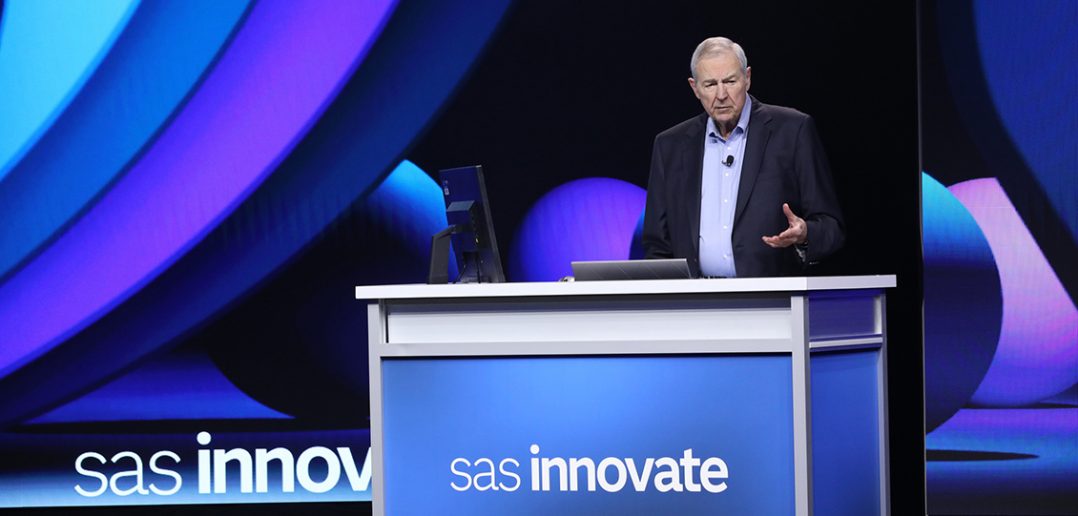SAS® pairs perfectly with data and AI and many at SAS Innovate agree.
SAS Innovate host and technical training consultant Dominique Weatherspoon welcomed attendees at the Aria in Las Vegas. SAS Chief Technology Officer Bryan Harris dove into a few important topics including innovation inspired by human need, how SAS sees the data and AI market and our technology vision.
“When you learn faster, you embrace the future,” said Harris. “Simply put, companies that learn faster win.”
But where do we make the difference?
With over 17,000 customers worldwide, Harris talked about multiple exciting examples and SAS' exceptional performance. He reinforced that SAS believes productivity, performance, and trust are three enduring qualities that will empower our customers’ businesses with data and AI.

It is not just SAS, but our SAS® Viya® platform and the next iteration of our platform, SAS Viya Workbench (set for general availability later in 2024) and App Factory. That is a rapid application development environment to build fit-for-purpose, AI-driven applications.
“We see a future with an explosion of fit-for-purpose, AI-driven applications, and we want to empower your teams to create them,” said Harris.
After walking through our platform, he addressed our solutions and the next evolution of our portfolio: SAS Models.
Where does AI investment come in?
Harris sees it as a trio of categories where SAS makes the difference, and businesses want to invest in all three ways:
- Builders of AI.
- Buyers of solutions.
- Subscribers of models.
And it’s not just AI, it’s generative AI.
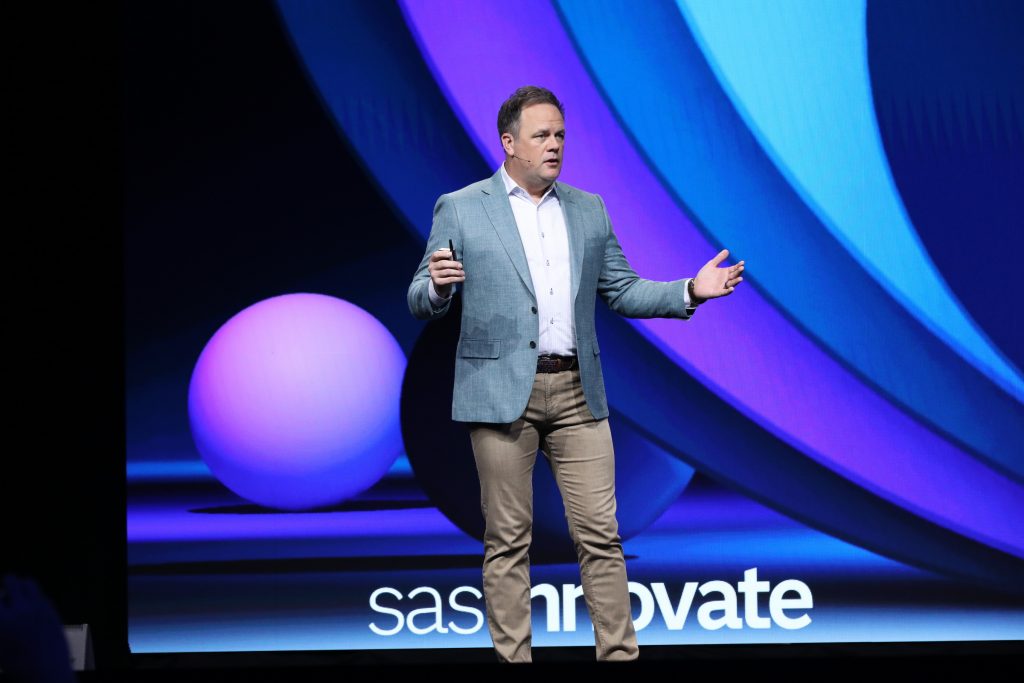
“We are leveraging Viya Text Analytics and natural language processing to pre-process prompts semantically and correlate the prompts from across different GenAI experiences into an inventory that identifies a curated, governed prompt,” said Harris.
This allows us to bring everything together into a consistent, coherent question and get a consistent answer. Additionally, this process has implications when you’re using RAG architectures, which are doing queries into vector databases.
Improving the consistency of the question improves the consistency of the similarity search in the vector store. This reduces error and improves the context window for LLM reasoning. Harris showcased how, by using SAS Viya, users get all of the benefits of productivity, performance and trust from our portfolio with acceleration from quantum computing. We are integrating SAS® Viya® CoPilot across our entire enterprise, empowering users to learn faster.
A word from Georgia-Pacific
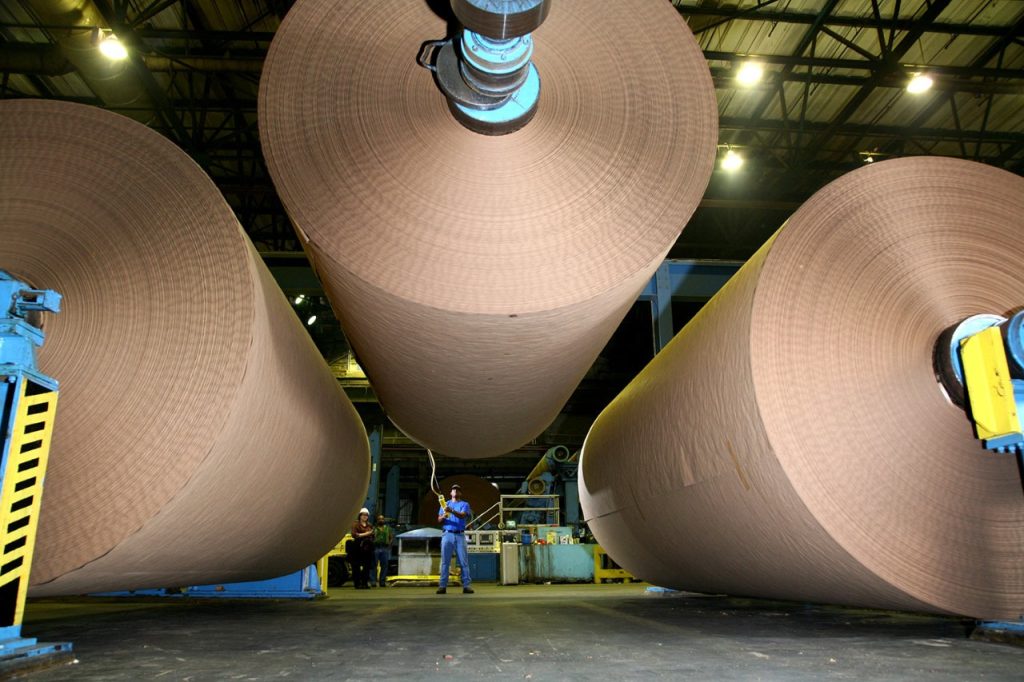
Georgia-Pacific Senior Director of AI Sam Coyne showcased how they are using SAS to find and fix a problem that doesn’t happen often, which is an important caveat. Just like people, all trees don’t look the same. Logs aren’t all straight. Because curved logs don’t happen often, it’s a hard problem to solve. They use synthetic image creation of imperfect logs to solve problems before they happen.
“Value is only created when someone does something with it,” said Coyne. “It’s worth to us north of $8 million.”
In another instance, their company is running GenAI, with SAS Intelligent Decisioning on AWS on their homegrown application, aptly named “ChatGP.” This can handle structured data while serving up corrective actions and Gen AI prompt interactions.
“It’s really about upscaling workers,” said Coyne. “I basically have an assistant there to help me.”
How we're making organizations more productive
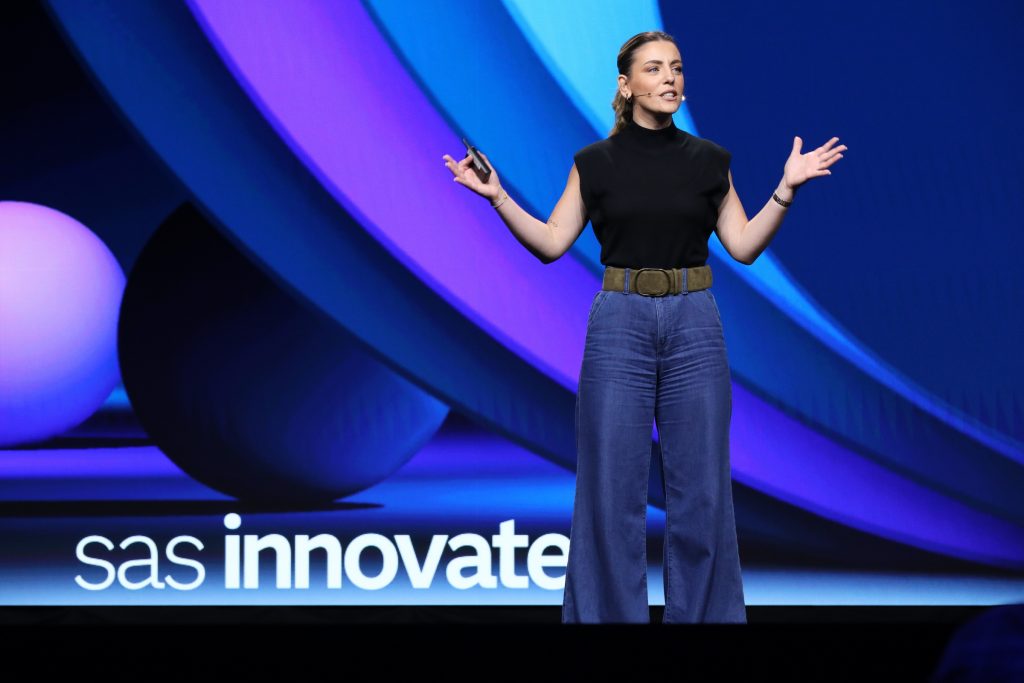
SAS Senior Vice President of Platform Engineering Jared Peterson played host for this section, welcoming our Global Product Marketing Strategy for AI and GenAI, Marinela Profi, who talked about a few of SAS’ favorite people: developers.
How does SAS make their job more productive? Over the years it has changed, but one way today is through large language models (LLMs).
“LLMs alone do not solve business problems,” Profi said. To get to a solution, a user must have systems that integrate with LLMs to solve business processes. “That is exactly what SAS Viya does,” she said.
She gave an example of a bank that wanted to deal with customer complaints. SAS Viya managed the bulk of the work with LLMs only doing two small tasks. The results? A 20% increase in the volume of complaints handled and a decrease of 8% to 15% in handling the cost.
“This is GenAI in action,” said Profi.

Now, introducing SAS® Viya® Copilot. Viya Copilot is like having your own assistant ready to take on any tasks you want. In a demo, Profi displayed air quality, asking the technology to run trend analyses, produce plots and other visuals, and generate dashboards. Not only that, Profi said, but a user can dip into the development environment to see the code generated, debug, generate new code and even “brainstorm.”
Mind. Blown.
She closed by introducing SAS® Data Maker, which, like Copilot, is in private preview.
Dr. Goodnight takes the stage
First to demonstrate SAS Viya Workbench onstage was SAS CEO Jim Goodnight. He started the demo, watching the code load in less than 20 seconds.

“You can program in SAS; you can program in Python. And later this year, you can program in R,” said Goodnight.
For his first visual, he loaded what he called “the classic cowboy hat,” which he debuted at a SAS users group conference in Texas in the 1970s.
Next, Goodnight joked about how our CTO Bryan Harris often travels to Vegas, plays craps and then comes home asking for a raise. This prompted him to demonstrate how crap works.
Goodnight loaded a data set he labeled “craps.” With just a few lines of code, he tried to explain to Harris when he should “pack up and head to the bar.” Loading in seconds, he showed 30 million rolls, with the house average being 1.4% and it took a minimum of 221 rolls to make the point. Statistically speaking, it’s a totally random game.
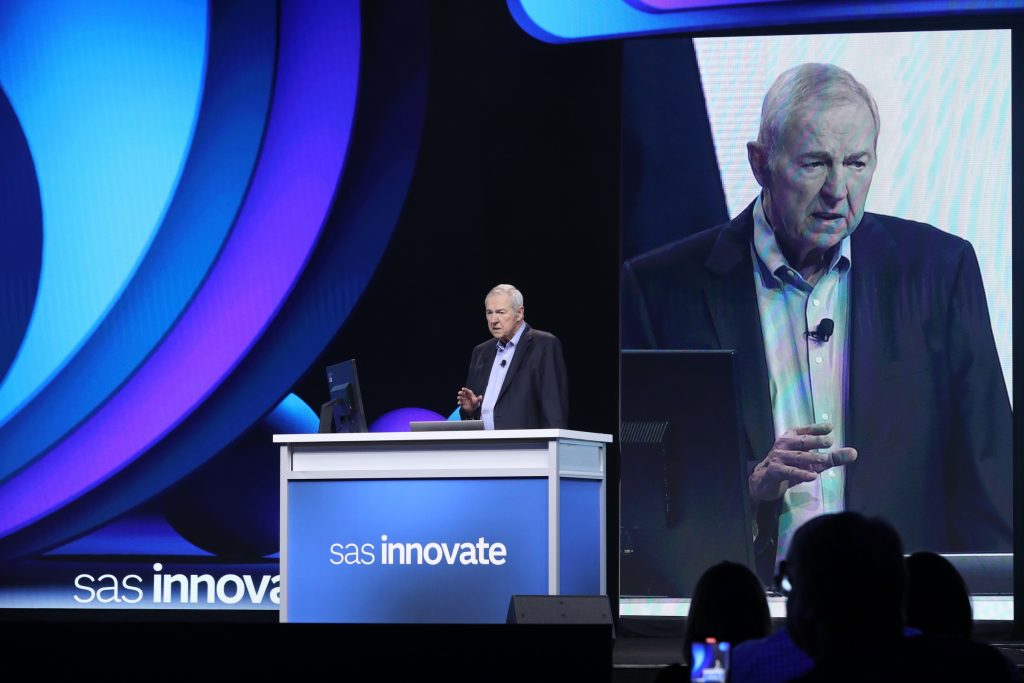
SAS Principal Software Developer Joseph Henry was next onstage, showcasing examples, including one where open-source software is made better with SAS. However, the session came to a quick close.
Surprising Henry on stage and getting a laugh from the crowd, Goodnight said, “Open source may be free, but our compute system isn’t, so I’d appreciate it if you’d just cut the damn thing off.”
All in on creativity with industry-leading solutions
“Today’s business leader is more tech-savvy than ever before,” said SAS Global Industry Marketing Director Alyssa Farrell as she introduced our focus on making business leaders more productive.
So, how do we get there at scale? SAS focuses on being fit for purpose, automation, and outcomes, all of which are supercharged by GenAI, especially in our solutions.
SAS CI product strategy director Rob Taylor joined her on stage to give a banking example. There, he showcased creating an end-to-end decision using the marketing decisions Copilot, complete with filtering options and then action.
Farrell then introduced a few pieces of key information about where SAS makes a difference in health care and life sciences. AstraZeneca Global Head of Enterprise Wayne Filin-Matthews joined her onstage. AstraZeneca produces therapeutics across the health care spectrum, and recently, they started using SAS Viya.
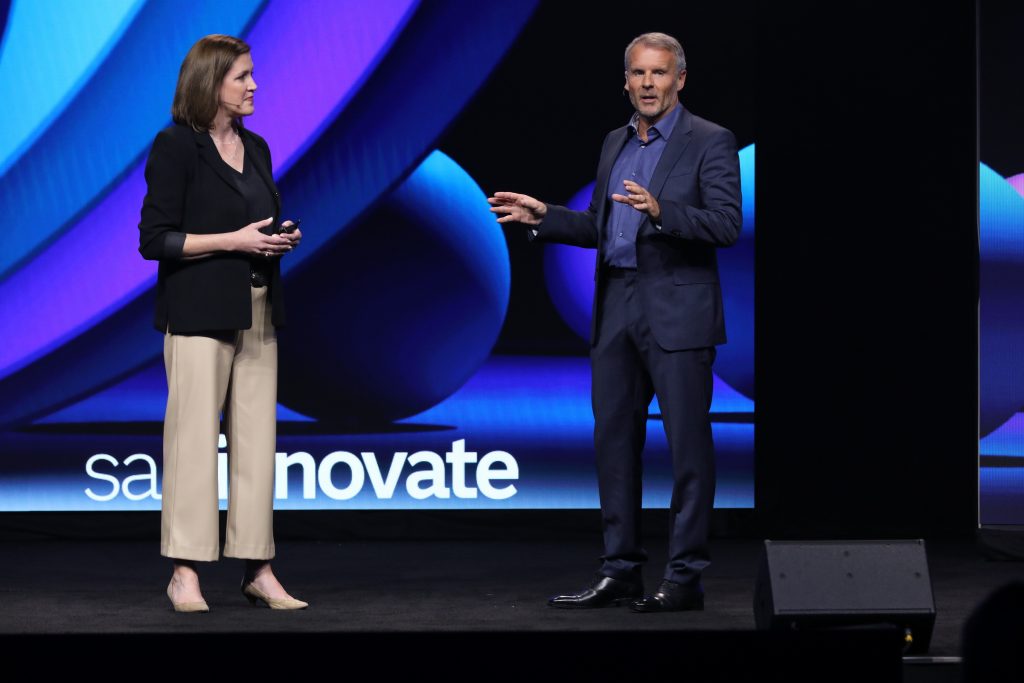
"The ability to trust the platform is equal to the productivity," said Filin-Matthews, which are two of the reasons why they chose SAS Viya.
They are trying to bring 20 drugs to market by 2030, which is a bold goal. With tech like SAS putting customers and patients first, he said they can make a difference.
“I don’t think there is an AI strategy. There is a business strategy that uses AI.”
Closing out the segment, Farrell made the audience a promise: “Continue to bring us your business problems and we will continue to bring solutions.”.
‘I am convinced that data science is in its infancy’
Keynote Cassie Kozyrkov is CEO of Data Scientific and a former Chief Decision Scientist at Google. In a tie back to SAS, she did her graduate work at North Carolina State University and studied SAS.
Her bold statement above set the tone for her keynote speech, during which she posed the question, “What will data science be when it grows up?”
She began her answer with how data scientists are seen by many today:
- They are smart, but lock them in the basement.
- Hacker-type person.
She then showed a punch card. A few people raised their hands so that they knew what it was and how to use it. “But you don’t have this on your resume,” she said, because this work isn’t relevant anymore. Also, we define ourselves by the tools we use, which makes AI a threat.
In the GenAI world, she’s come up with a new word, “thunking,” like the sound of a brick hitting the floor.
“It’s not the best of us. The best of us is thinking,” she said.
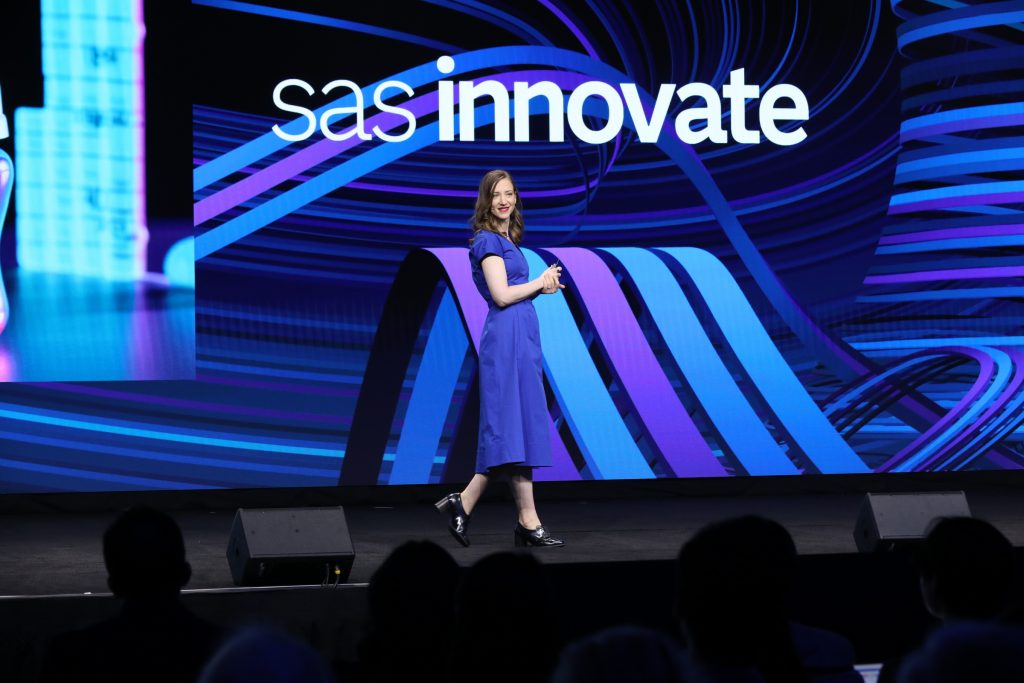
She talked about poetry and math, and when we look at GenAI, we are not taking away what coding was, we are doing our best to control the communication. Giving great instructions is prompt engineering.
“As the tools get better, we start to highlight what makes us data professionals in the first place,” she said.
We have spent so long on the how – how to get something to work – that we are now moving towards the “why.”
She asked, what is data for in the first place? For memory. “Pen and paper have better memory than you.”
“It’s not about truth, it’s about shared memory and that is an incredible superpower,” she said.
The more data you have, the more important a data scientist is because you tell the story of the data. In that journey to storytelling, one of the most important pieces is a strong foundation of good data. Data janitors – the people who clean the data – are the people who create that foundation.
She remarked that we need to encourage people to join that profession and let them know they are as important as the people making the decisions. Because as the tools get better those people will be closer to decision making, and it will be collaborative. Radical collaboration with people you may not even know.
After this main session ended, attendees headed out to break out sessions.
